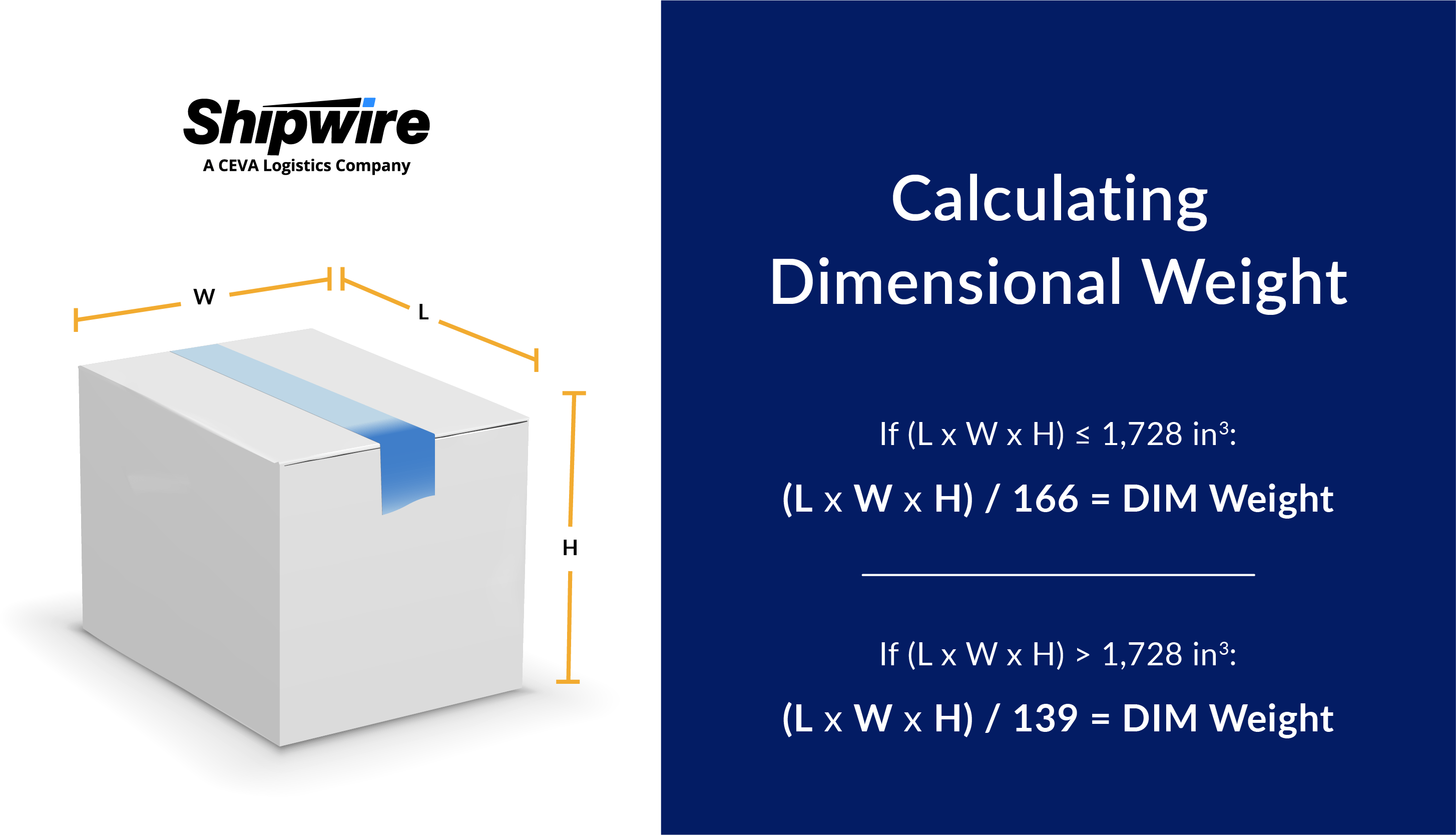*Editor’s Note: This press release was originally published on IngramMicroServices.com and has recently been republished to Shipwire.com following its acquisition by CEVA Logistics.
The approach to calculating shipping costs seems designed to confuse. Billable weight sometimes does not reflect physical weight at all, and instead involves a concept called dimensional weight.
To insulate themselves from the cost of space needed to transport lightweight, but bulky packages, carriers calculate charges based on whichever measurement is greater: the actual gross weight, or the volumetric weight (assuming a package meets a certain size). The application of dimensional weight can penalize shippers of light objects over dense objects.
Fortunately, you can insulate yourself from added costs. When you know dimensional weight is likely to be triggered – in other words, when bulk exceeds weight – you should pack to your advantage. The first step to preventing added costs is understanding dimensional weight.

What is dimensional weight?
Dimensional weight has long been the standard bearer in air shipping, but it didn’t impact ground shipping until 2007, when many carriers began incorporating the calculation.
The “weight” label is a bit of a misnomer. Dimensional weight (dim weight) reflects a package’s density, or how much space it will occupy on a carrier’s freight truck or airplane. You can think of it as a theoretical weight — it’s what a package should or could be expected to weigh, given its size.
To calculate the dimensional weight of a package:
- Measure the package. Note that sizes indicated by a box manufacturer may not apply, as carriers want the measurements of length, width and height to reflect the package’s size at its extremes. If there’s a bulge, a warped side or an irregular shape, the measurements should reflect all this, accounting for the most space the package can occupy. Avoid charge corrections by measuring!
- Measure the cubic size by multiplying length x width x height.
- Divide by the dimensional factor (dim divisor). For domestic ground shipments, the value of the dim divisor varies by carrier, but common divisors are 139 and 166. For international air shipments, divide the cubic size by 139. Dim divisors are subject to change, so be sure to check out the information from carriers for updates.
- Round up. Carriers will round up to the nearest whole number, so you should too.
Here’s an example
Let’s say you’re ground shipping a package via UPS. Your box measures 24″ x 18″ x 18″ and the parcel weighs 50 lbs.
- To find the cubic size, you’ll need to multiply 24 x 18 x 18. That yields 7,776 cubic inches.
- You’re shipping ground and the package is over 1,728 cubic inches (specific to UPS), meaning the applicable dim divisor is 139.
- Dim weight: 7,776 divided by 139. This yields 55.9 lbs.
- 55.9 lbs. and can be rounded up to 56 lbs.
Now, let’s pretend that same box size is used to ship something that weighs 65 lbs. The dim weight turns out to be less than the actual weight, so the actual weight of 65 lbs. will be the billable weight.
When is dimensional weight relevant?
It depends a little on your carrier, but there are a few rules of thumb to guide you in the application of dimensional weight.
Dim weight is always applicable for air service. For ground service by private carriers, billable weight is influenced by dim weight if the cubic size of the package is 3 cubic feet (5,184 cubic inches) or larger. If it’s less than that, you can expect actual weight to be used. Once you’ve confirmed the cubic size exceeds 3 feet and calculated your package’s dimensional weight, compare the dim weight to the actual gross weight. The greater of the two will be used to determine shipping costs.
It’s also relevant to note that if your package is deemed “large” — meaning the length plus girth exceeds 130 inches – carriers like UPS and FedEx will apply a surcharge in addition to billing dim weight. Additional Handling Surcharges are applied when packages are between 48-108 inches on the longest side.
The United States Postal Service has its own spin on the cubic size and dim weight issue, which can make its flat-rate mailing packages attractive. A recent update states that starting on June 23, 2019, dim weight will apply to Priority Mail and Priority Mail Express packages over one cubic foot for all zones, including Local & 1-9. Today, DIM weight only applies to packages over one cubic foot and going to zones 5-9. Also, the DIM divisor will be changing from 194 to 166.
You can explore the ins and outs of various carriers’ approaches to billable shipping on their individual websites. We can also lay it out for you, and Shipwire allows you to easily evaluate how your overall costs will be impacted by tweaks to your shipping materials and methods.
Dim weight is costly. Where possible, decrease the size of the box you’re using to ship. Even shaving 1 inch can save money, and the savings only increase with volume.



